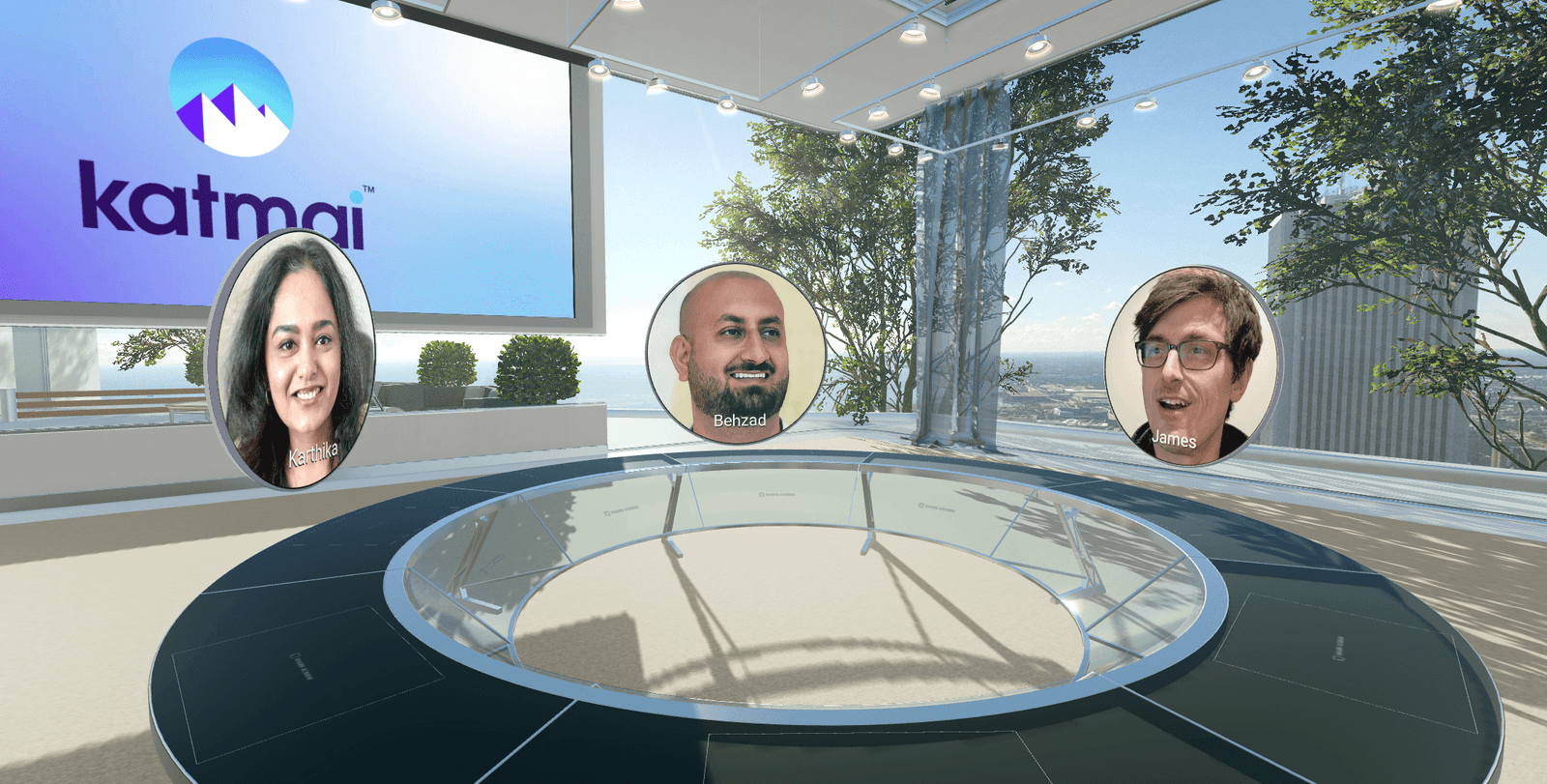2020: Katmai - The virtual office

What if remote work were as easy as working in the office? What if you could just walk over to a colleague quickly? What if video calls weren’t just boring rectangles?
These questions led to what would become Katmai: a virtual office where colleagues move through a three-dimensional space as avatars – like Zoom and The Sims combined.
The idea came about during the COVID pandemic, when we all had to work from home. I sold the idea to an American, who then hired me and built a startup with 40 employees around it. After nearly 5 years, it has grown into a mature piece of software with customers in both the U.S. and Europe.
I was the inventor of Katmai, which has resulted in more than 18 patents. After that, I spent almost 5 years pushing the limits of what’s possible in the browser, working with 3D graphics using WebGL/Three.js, WebRTC audio/video communication using Mediasoup, and maintaining a solid codebase in TypeScript. The core of the original software architecture remains unchanged.
I chose to use TypeScript for both the server and frontend (compare this to using Java for both in the Zermelo Portal). Postgres is also the database here.
In addition to my own technical work, I served as the "Principal Engineer" for Katmai and set up the tech leads program, which enabled us to establish solid technical leadership. This included sound architectural design and thorough code reviews. That was essential, because developing such cutting-edge software in the browser isn’t easy. The internal architecture is more similar to that of a video game than a classic business application. Code runs at 30 frames per second – in browsers, across continents, and on the server. And everything has to stay in sync.
It was a great experience working with Americans and Canadians, who themselves came from various parts of the world. It was also very interesting to experience the American tech startup culture, with investors and all that comes with it.
While I was working on this, I also started at LUMC – see LUMC – Legacy Software, Innovative Care